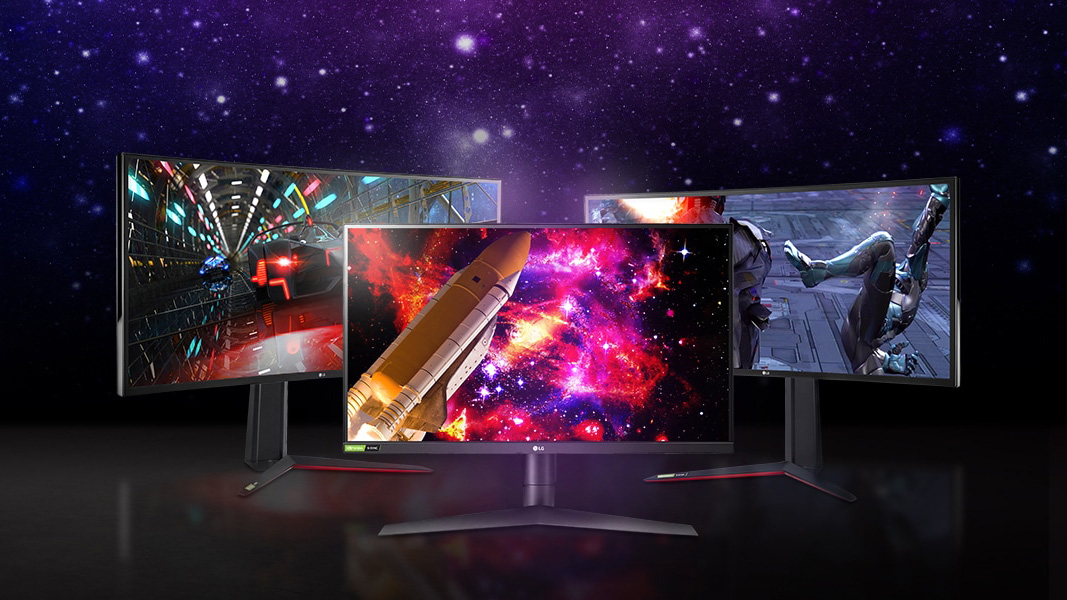New monitor standard incorporates 'dual-mode' refresh rates and overclocking certification — VESA introduces Adaptive-Sync 1.1a
Perfect for new monitors that feature two separate resolution/refresh rate configurations.

The Video Electronics Standards Association (VESA) has introduced a new 1.1a Adaptive-Sync Display standard that addresses the emerging market of dual-mode monitors like the LG 32GS95UE. The new spec builds on the 1.1 standard, ensuring certified dual-mode monitors provide a high-quality experience in their native resolution and high-refresh-rate modes.
"Dual-mode" is the unofficial name for the functionality of a new wave of gaming monitors. As the name suggests, these new dual-mode monitors offer two different visual experiences, with one prioritizing display resolution and the other prioritizing refresh rate. The new 32' LG dual-mode monitor mentioned earlier has a 4K 144Hz mode and a 1080P 280Hz mode suited to fact-paced shooters.
This new breed of gaming monitor aims to improve areas of the monitor market that are actively handicapped by modern GPU technology. Monitor technology has improved to the point where 4K 240-480Hz panels are now a reality, but modern GPUs can't keep up with that level of image fidelity. A good example of this is the RTX 40-series, which completely lacks DisplayPort 2.0 or 2.1 support, instead utilizing the much older 1.4 spec that is incapable of fully supporting these new high-performance 4K gaming displays.
Having dual-mode functionality circumvents this problem by providing two separate resolution/refresh rate configurations, one optimized for image fidelity and one for image smoothness. Unfortunately, the secondary setting (with the higher refresh rate) will inevitably require some sort of hardware upscaling. It will be interesting to see if this type of upscaling will be superior to in-game image scalers such as DLSS and FSR.
According to VESA, the new 1.1a certification provides updated testing procedures and logo support for displays operating at different maximum refresh rates when the resolution is reduced. This will ensure that any certified dual-mode monitors with the 1.1a certification will operate within VESA's specifications in all modes, including grey-to-grey response times, jitter, flicker, and more.
The new specification will come with a new logo, specifying each mode's refresh rate and resolution. VESA dictates that the left side of the logo feature the display's maximum certified refresh rate at its maximum vertical resolution, while the right side shows the monitor's alternative certified maximum refresh rate and vertical resolution.
On top of this, VESA is also introducing display overclocking support with the 1.1a certification. But, to get certified, each monitor must support Adaptive-Sync-enabled GPUs in a non-proprietary manner (i.e., G-Sync/G-Sync Ultimate), and the display must pass all rigorous Adaptive-Sync Display compliance tests in its default mode and get "completely retested a second time in the overclocking mode." This will inevitably increase the stability and reliability of gaming monitors that feature an overclocking mode in the future.
Get Tom's Hardware's best news and in-depth reviews, straight to your inbox.
LG's dual-mode monitor is the first to be certified under the new Adaptive-Sync Display 1.1a standard, but we expect more gaming monitor manufacturers to announce their dual-mode compatible monitors shortly.

Aaron Klotz is a contributing writer for Tom’s Hardware, covering news related to computer hardware such as CPUs, and graphics cards.
-
gamerk316 ReplyA good example of this is the RTX 40-series, which completely lacks DisplayPort 2.0 or 2.1 support, instead utilizing the much older 1.4 spec that is incapable of fully supporting these new high-performance 4K gaming displays.
*cough* The 4000 series NVIDIA GPUs support HDMI 2.1, which already handles 4k 144Hz & 1440p 240Hz, with HDR, before even considering DSC. -
GustavoVanni Reply
You could still delete your comment, because HDMI is not the same as DisplayPort, dude...gamerk316 said:*cough* The 4000 series NVIDIA GPUs support HDMI 2.1, which already handles 4k 144Hz & 1440p 240Hz, with HDR, before even considering DSC.
They're talking about 4K 240Hz+ which HDMI 2.1 doesn't support. -
derekullo Reply
Technically HDMI 2.1 can do 4k at exactly 240Hz with DSC.GustavoVanni said:You could still delete your comment, because HDMI is not the same as DisplayPort, dude...
They're talking about 4K 240Hz+ which HDMI 2.1 doesn't support.
Not 240+ Hz, but close!
https://en.wikipedia.org/wiki/HDMI#Refresh_frequency_limits_for_standard_video
Having said that if in doubt choose displayport.
https://en.wikipedia.org/wiki/DisplayPort#Refresh_frequency_limits_for_standard_video